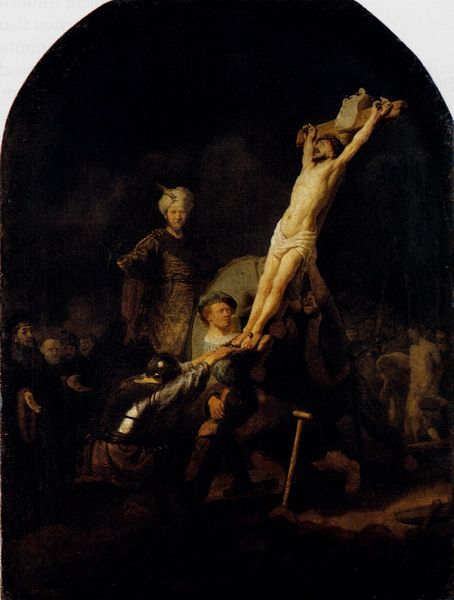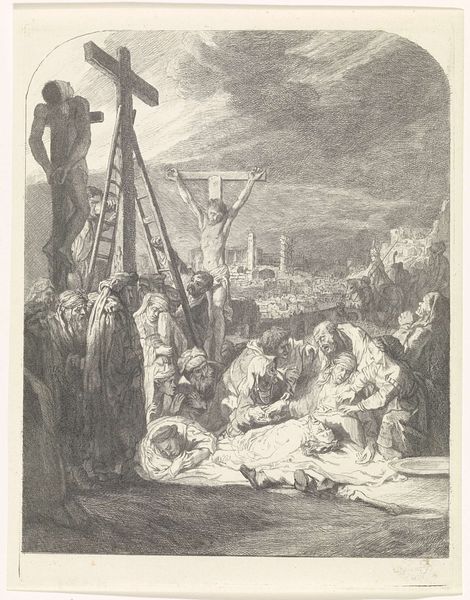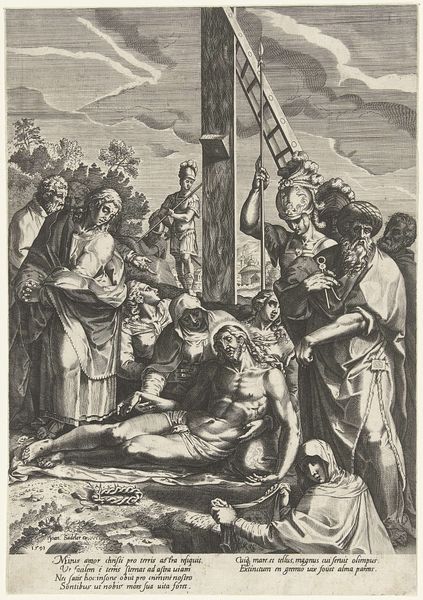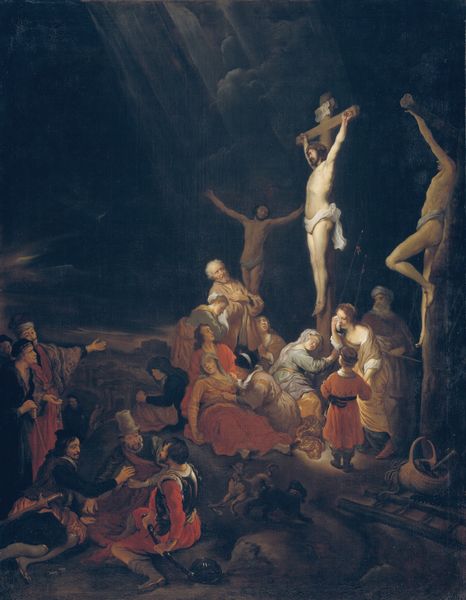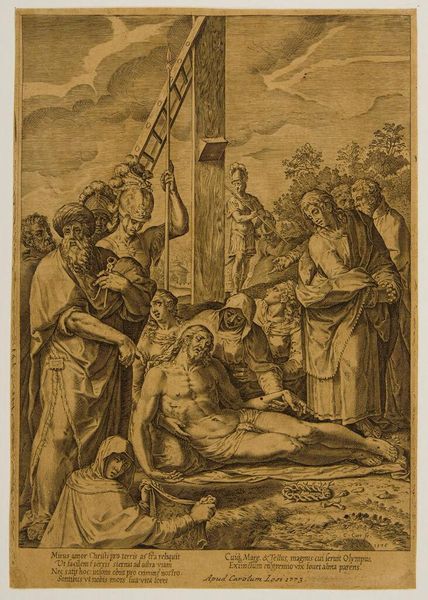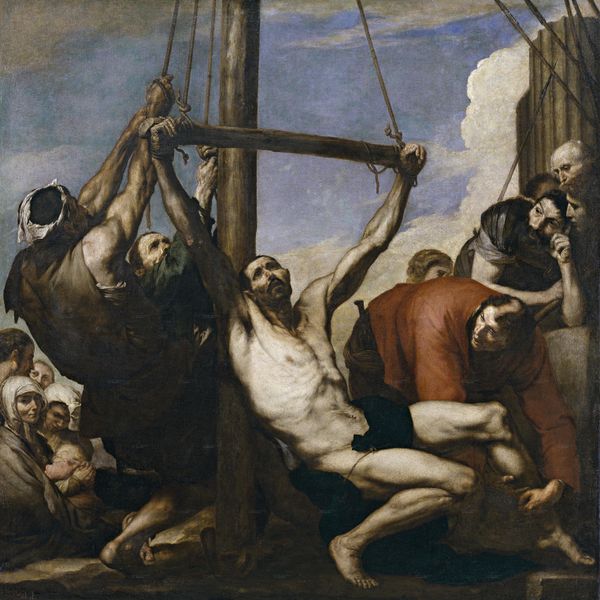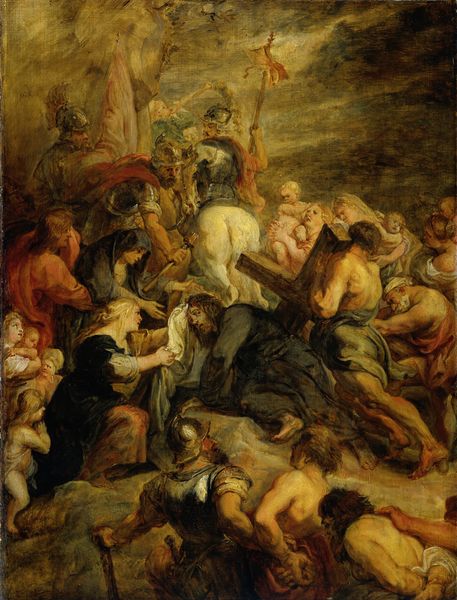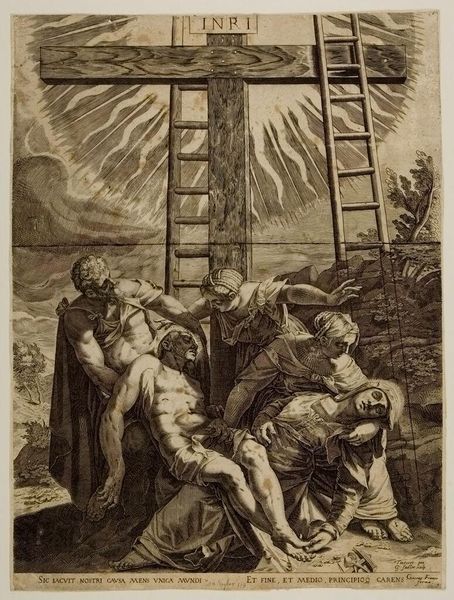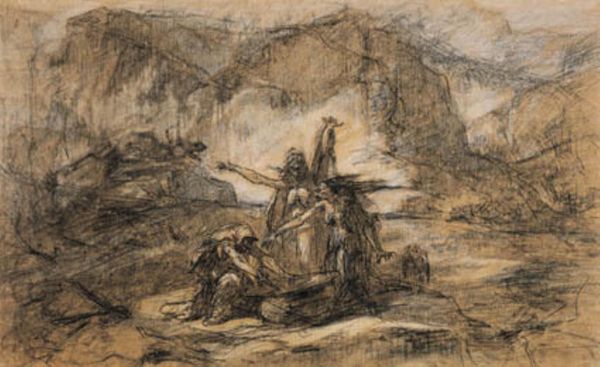
painting, oil-paint
#
narrative-art
#
baroque
#
dutch-golden-age
#
painting
#
oil-paint
#
figuration
#
oil painting
#
history-painting
Dimensions: 32 x 27 cm
Copyright: Public domain
Editor: Rembrandt’s “The Lamentation over the Dead Christ,” painted in 1635 using oil paint, is striking. I’m really drawn to the emotional intensity of the figures, it’s just… raw. How do you interpret this work in relation to its historical context? Curator: This piece screams Dutch Golden Age doesn't it? Beyond the artistry, this painting forces us to confront not only death, but also marginalization. Think about who is present at this lamentation. Who is given space to grieve? And conversely, whose grief is rendered invisible, or is actively silenced within religious historical narratives? Editor: So, you’re saying we should think about whose stories are being told and whose are being left out of traditional interpretations of the Passion? Curator: Exactly. This scene, dominated by mourning figures, also quietly showcases societal structures and power dynamics. For example, consider how women, often relegated to the domestic sphere, are central figures in mourning. What does this tell us about the acceptable expressions of grief, particularly in relation to gender roles of the time? And about contemporary biases that privilege certain interpretations over others? Editor: I see your point. It's not just a religious scene; it’s a commentary on societal roles and the politics of mourning. That makes me wonder if Rembrandt intended to critique these structures? Curator: Whether intentional or not, Rembrandt provides us a visual text ripe for interrogation. How can we use this painting to question the silences within historical narratives, and amplify marginalized voices in the present? Editor: This has completely changed how I see this painting! I was so focused on the religious aspect, I didn’t even think about its implications of race, class and gender! Curator: Art has the power to connect us to the past, and to challenge the power structures in our contemporary moment, if we only ask the right questions.
Comments
No comments
Be the first to comment and join the conversation on the ultimate creative platform.

